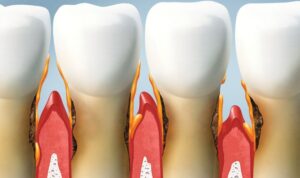Technological developments have been crucial in improving patient care and treatment results in the dynamic field of dentistry. It is clear from delving into the complex web of inventions that have revolutionized the dentistry field that dental professionals dedicated to delivering the best possible treatment must keep up with these developments. This article examines the innovative technologies transforming dentistry and ushering in a new era of accuracy and patient-centered care.
Digital Dentistry: The Revolution Begins
Digital dentistry has evolved, transforming conventional methods and greatly enhancing diagnostic and therapeutic procedures. For example, intraoral scanners have taken the role of unpleasant and laborious conventional molds, providing a more accurate and patient-friendly way to take detailed photographs of the oral cavity. This improves diagnostic precision while guaranteeing a more pleasant experience for the patient.
3D Printing: Precision in Prosthetics
A new age of efficiency and precision in dentistry has been brought about by incorporating 3D printing technology, especially in fabricating dental prostheses. Dentures, bridges, and crowns may all be produced with great precision and customization thanks to 3D printing. This improves these prosthetic devices’ overall fit and effectiveness while cutting down on turnaround time.
Artificial Intelligence in Diagnostics
Dentistry has embraced artificial intelligence (AI), which provides sophisticated diagnostic tools and predictive analysis. Large datasets of dental imaging may be analyzed by AI algorithms, which help diagnose conditions like cavities, gum disease, and even oral malignancies early. Because of this proactive approach, dental practitioners can intervene early and provide prompt, efficient treatment.
Teledentistry: Bridging Gaps in Access
The development of teledentistry has been beneficial, particularly in addressing challenges related to dental care accessibility. Patients can communicate with their dentists virtually during virtual consultations to get advice, information on preventative care, and even preliminary examinations. This promotes routine checkups and increases access to care, improving overall dental health.
Robotics in Dentistry: Precision Beyond Human Capability
Robotics has made its way into dentistry, providing control and accuracy that are unmatched by humans. More and more surgeries are being performed using robotic assistance, which makes complex operations less invasive. This helps patients recover more quickly, have better therapy results, and lessen their suffering.
Laser Technology: Minimally Invasive Precision
Laser technology has revolutionized dental operations by offering a less intrusive substitute for conventional techniques. Lasers can be used for soft tissue treatments and cavity preparation; they provide accuracy, less bleeding, and quicker healing. Less discomfort for patients is a benefit, and dentists value the accuracy and productivity laser technology offers to their office.
Smart Dental Implants: A Fusion of Technology and Biology
The introduction of smart dental implants has brought about a technical revolution in implant dentistry. Because these implants have sensors and monitoring equipment, it is possible to watch the healing process in real time and identify possible problems early on. In addition to ensuring the long-term success of dental implant surgeries, this proactive method offers insightful information about patient recovery.
Augmented Reality in Dental Education
Augmented reality, or AR, is advancing significantly in dentistry education. Students can participate in immersive learning experiences using augmented reality (AR) software to see intricate dental operations in real time. The issues of modern dentistry are better understood and skillfully developed by the future generation of dental professionals thanks to this practical approach.
Conclusion: Navigating the Future of Dentistry
It’s clear from navigating the ever-changing field of dental technology, including the innovative strides made by a st. Petersburg dentist, that these developments are more than just fads—rather, they’re revolutionary forces that are changing the fundamentals of dental care. With every technological advancement, we are getting closer to a day when patient-centered treatment, accessibility, and accuracy, from digital impressions to robotic surgery, will be the norm.






